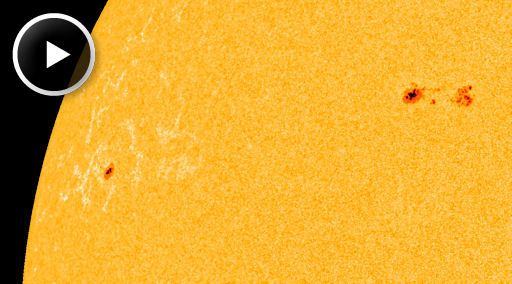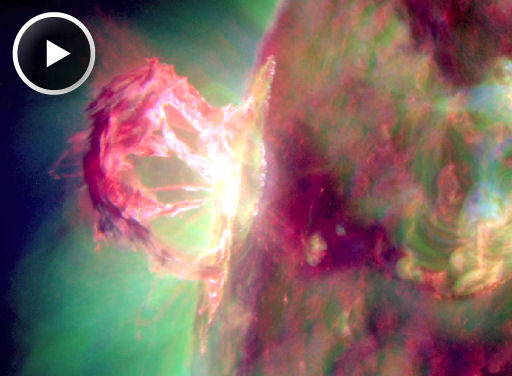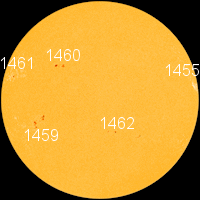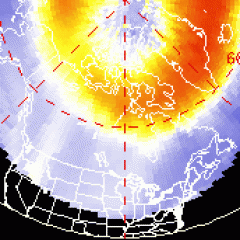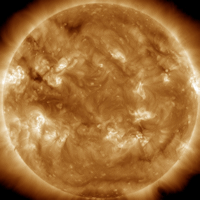GROWING SUNSPOT: What a difference a day makes. On April 16th, sunspot AR1460 did not exist. Twenty-four hours later it was twice as big as the planet Earth. This April 17th movie from NASA's Solar Dynamics Observatory shows sunspot genesis in action:
The sunspot's magnetic field is still too simple for strong flares, but if the expansion continues apace, instabilities could develop that lead to explosions. Readers with solar telescopes should keep an eye on AR1460. Solar flare alerts: text, voice.
SPECTACULAR EXPLOSION: Magnetic fields on the sun's northeastern limb erupted around 17:45 UT on April 16th, producing one of the most visually-spectacular explosions in years. NASA's Solar Dynamics Observatory (SDO) recorded the blast at extreme ultraviolet wavelengths:
The explosion, which registered M1.7 on the Richter Scale of solar flares, was not Earth-directed, but it did hurl a CME into space. Analysts at the Goddard Space Weather Lab have analyzed the trajectory of the cloud and found that it will hit NASA's STEREO-B spacecraft, the Spitzer space telescope, and the rover Curiosity en route to Mars. Planets Venus and Mars could also receive a glancing blow.

Solar wind
speed: 425.4 km/sec
density: 1.2 protons/cm3
explanation | more data
Updated: Today at 1645 UT
X-ray Solar Flares
6-hr max: C8 1239 UT Apr18
24-hr: C8 1239 UT Apr18
explanation | more data
Updated: Today at: 1600 UT
![]()
Daily Sun: 18 Apr 12
Sunspot 1460 is growing rapidly and could soon pose a threat for M-class solar flares. Credit: SDO/HMI
![]()
Sunspot number: 78
What is the sunspot number?
Updated 17 Apr 2012
Spotless Days
Current Stretch: 0 days
2012 total: 0 days (0%)
2011 total: 2 days (<1%)
2010 total: 51 days (14%)
2009 total: 260 days (71%)
Since 2004: 821 days
Typical Solar Min: 486 days
Updated 17 Apr 2012
The Radio Sun
10.7 cm flux: 114 sfu
explanation | more data
Updated 17 Apr 2012
![]()
Current Auroral Oval:
Switch to: Europe, USA, New Zealand, Antarctica
Credit: NOAA/POES
![]()
Planetary K-index
Now: Kp= 2 quiet
24-hr max: Kp= 3 quiet
explanation | more data
Interplanetary Mag. Field
Btotal: 3.4 nT
Bz: 1.8 nT south
explanation | more data
Updated: Today at 1647 UT
![]()
Coronal Holes: 18 Apr 12
There are no large coronal holes on tthe Earthside of the sun. Credit: SDO/AIA.
